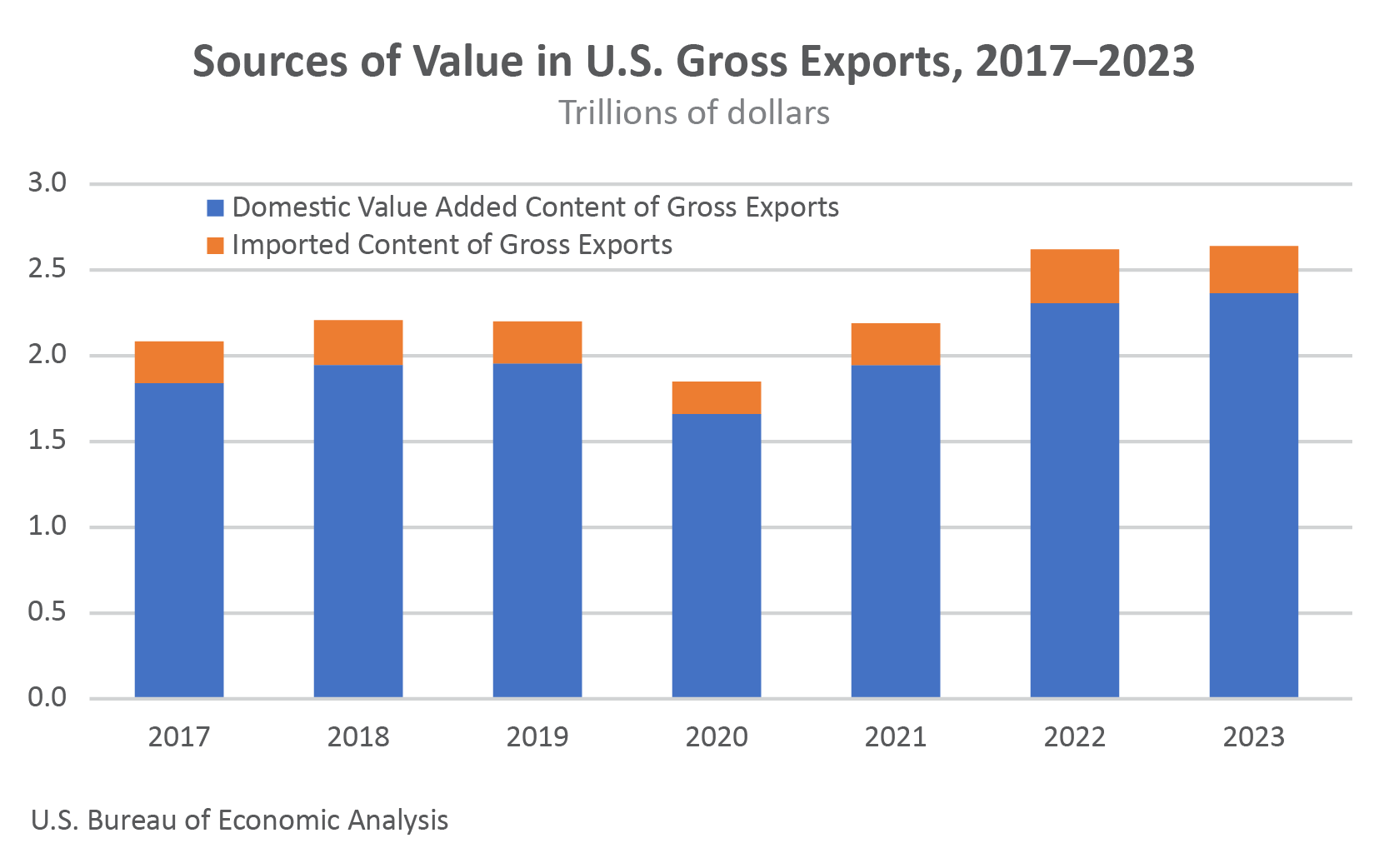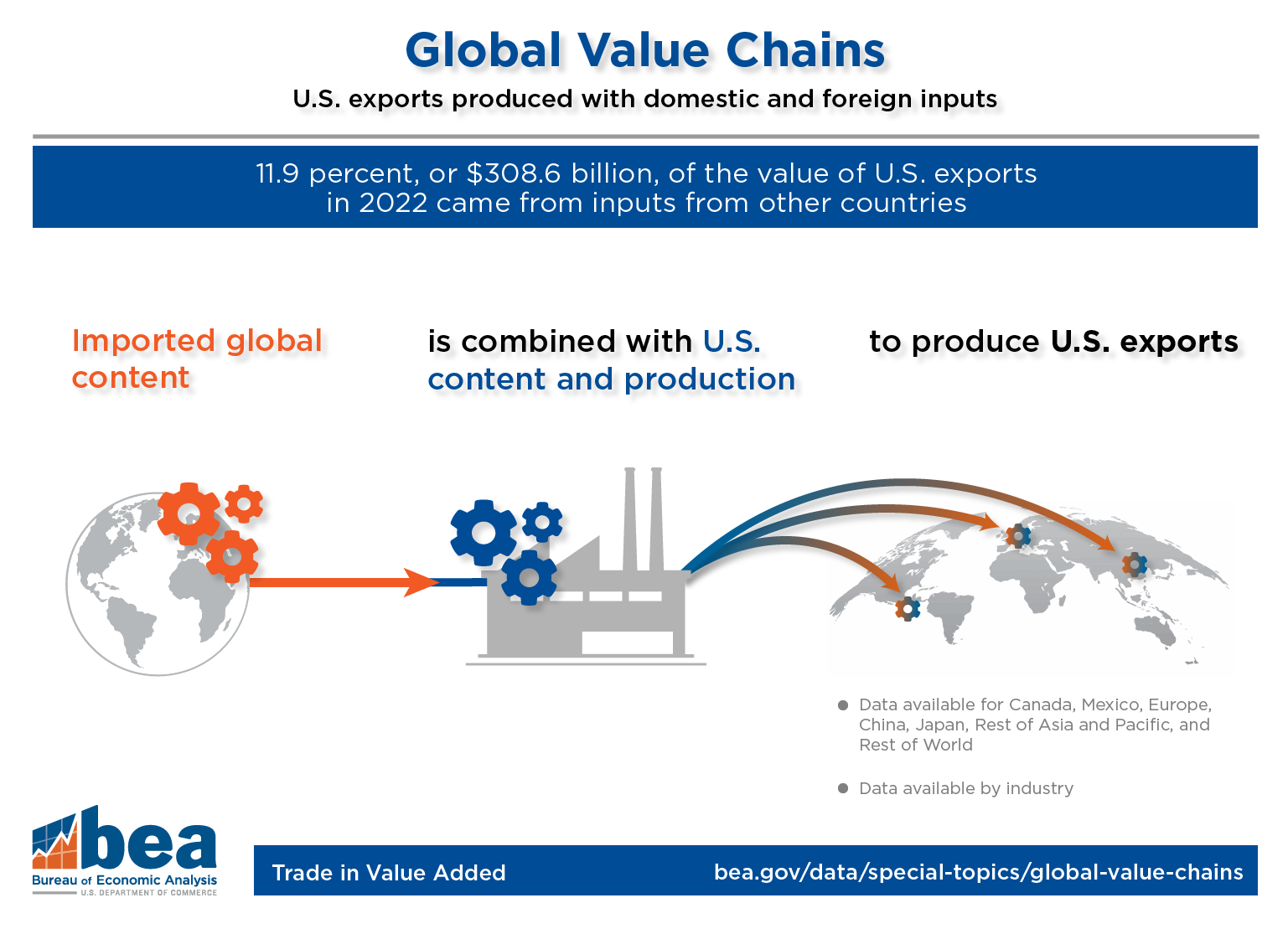Global Value Chains
BEA is developing data to provide a more complete and nuanced view of U.S. trade to analyze the evolving structure of international trade. The data help analyze global value chains – increasingly complicated supply chains that link many countries together to produce a good or service.
For example, an airliner exported from the United States might combine U.S.-made parts with wings from Japan, passenger doors from France, landing gear from England, and other components built elsewhere. Likewise, U.S. industries provide goods and services used in other countries’ exports.
In the first milestone of this ongoing project, BEA released prototype data on trade in value added (TiVA) in December 2021. The data were expanded in 2023 to show additional breakdowns by industry and international region.
In June 2025, BEA launched a new TiVA Table Builder tool. The tool enables users to generate custom tables to explore export-oriented data, including the mix of domestic and foreign content used to produce goods and services exported by U.S. industries.
These data tables can be used to answer questions such as: What are the domestic and imported inputs used to create a U.S. industry’s exports? How do U.S. industries contribute to different global value chains?
Current release: June 30, 2025
Note: To use the TiVA Table Builder, select Interactive Data: Trade in Value Added in the Data & Documentation section.
- Interactive Data: Trade in Value Added
- User Guide: Trade in Value Added Data and Table Builder (PDF)
- Selected and Underlying Detail Tables
- Blog: A Closer Look at the Mix of Global and Domestic Content in U.S. Exports March 2023
- Technical Document: Methodology for Preparing National Trade in Value Added (TiVA) Statistics
- Archive
- Sector to Industry Concordance
- Article: National Trade in Value Added Statistics: Uses and Applications Survey of Current Business | February 2023
- A Primer on BEA's Industry Accounts
- Concepts and Methods of the U.S. Input-Output Accounts
- Slide Presentation: Single Country Trade in Value Added (PDF)
- BEA’s statistics on trade in value added are being developed in collaboration with the National Center for Science and Engineering Statistics of the National Science Foundation.
What is Trade in Value Added?
Contact Personnel
-
General InquiriesGlobal Value Chains
-
MediaConnie O'Connell

